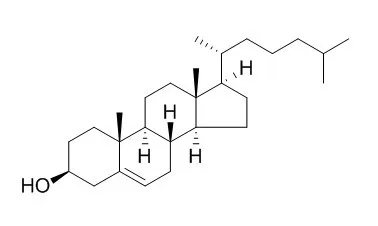| In vivo: |
| Am J Med. 2015 Apr;128(4):403-9. | | Cholesterol treatment and changes in guidelines in an academic medical practice.[Pubmed: 25460526] | National guidelines are intended to influence physician Cholesterol treatment practices, yet few studies have documented the effect of new guidelines on actual prescribing behaviors and impacts on patient eligibility for treatment. We describe current Cholesterol treatment in an academic practice of Family and Internal Medicine physicians as well the effect of a change in Cholesterol treatment guidelines from 2001 Adult Treatment Panel III (ATPIII) to 2013 American College of Cardiology/American Heart Association (ACC/AHA) guidelines.
METHODS AND RESULTS:
Medical records were extracted from primary care patients aged 40-75 years with at least one outpatient visit from January 1, 2012 to July 31, 2013; patients were included if they had records of Cholesterol testing, blood pressure measurement, sex, race, and smoking status. Patients were classified into ATPIII and ACC/AHA categories based on clinical variables (eg, diabetes, hypertension, atherosclerotic cardiovascular disease), Framingham Risk Score, and 10-year atherosclerotic cardiovascular disease risk. There were 4536 patients included in the analysis. Of these, 71% met ATPIII goals and 56% met ACC/AHA guidelines, a 15% decrease. Forty-three percent of high-risk patients met their low-density lipoprotein goals and 46% were on statins. Overall, 32% of patients would need to be started on a statin, 12% require an increased dose, and 6% could stop statins. Of patients considered low risk by ATPIII guidelines, 271 would be eligible for treatment by ACC/AHA guidelines, whereas 129 patients were shifted from intermediate risk to low risk with the change in guidelines.
CONCLUSIONS:
The ACC/AHA guidelines expand the number of patients recommended to receive statins, particularly among patients who were previously thought to be at moderate risk, and would increase the intensity of treatment for many patients at high risk. Significant numbers of patients at risk for cardiovascular events were not receiving guideline-based treatment. New Cholesterol guidelines may make treatment decisions easier. | | Biochem Biophys Res Commun. 2015 Feb 20;457(4):614-20. | | Cholesterol reduces the sensitivity to platinum-based chemotherapy via upregulating ABCG2 in lung adenocarcinoma.[Pubmed: 25603057] | Inoperable lung adenocarcinoma is currently treated with platinum-based chemotherapy. However, the effectiveness of these chemotherapeutic agents is not the same for all patients.
METHODS AND RESULTS:
Patients either show quick chemoresistance (QCR) or delayed chemoresistance (DCR), which are defined by 87 and 242 days of progression-free survival (PFS) after initial platinum-based treatment, respectively. We found that QCR patients displayed an elevated level of serum Cholesterol and that their tumors showed upregulated ABCG2 expression. We propose that chemoresistance may be attributed to Cholesterol-induced ABCG2 expression and hypothesize that blocking ABCG2 may increase the efficacy of platinum-based chemotherapeutic agents. Using the MTT cell viability assay, we observed that cotreatment with ABCG2 blocker Nicardipine and platinum-based drugs Cisplatin, Oxaliplatin or Carboplatin significantly decreased cell viability of tumor cells.
CONCLUSIONS:
Importantly, our results also showed that incubating cells with Cholesterol prior to chemotherapy treatment or cotreatment increased cell viability of tumor cells relative to the controls. |
|






 Cell. 2018 Jan 11;172(1-2):249-261.e12. doi: 10.1016/j.cell.2017.12.019.IF=36.216(2019)
Cell. 2018 Jan 11;172(1-2):249-261.e12. doi: 10.1016/j.cell.2017.12.019.IF=36.216(2019) Cell Metab. 2020 Mar 3;31(3):534-548.e5. doi: 10.1016/j.cmet.2020.01.002.IF=22.415(2019)
Cell Metab. 2020 Mar 3;31(3):534-548.e5. doi: 10.1016/j.cmet.2020.01.002.IF=22.415(2019) Mol Cell. 2017 Nov 16;68(4):673-685.e6. doi: 10.1016/j.molcel.2017.10.022.IF=14.548(2019)
Mol Cell. 2017 Nov 16;68(4):673-685.e6. doi: 10.1016/j.molcel.2017.10.022.IF=14.548(2019)